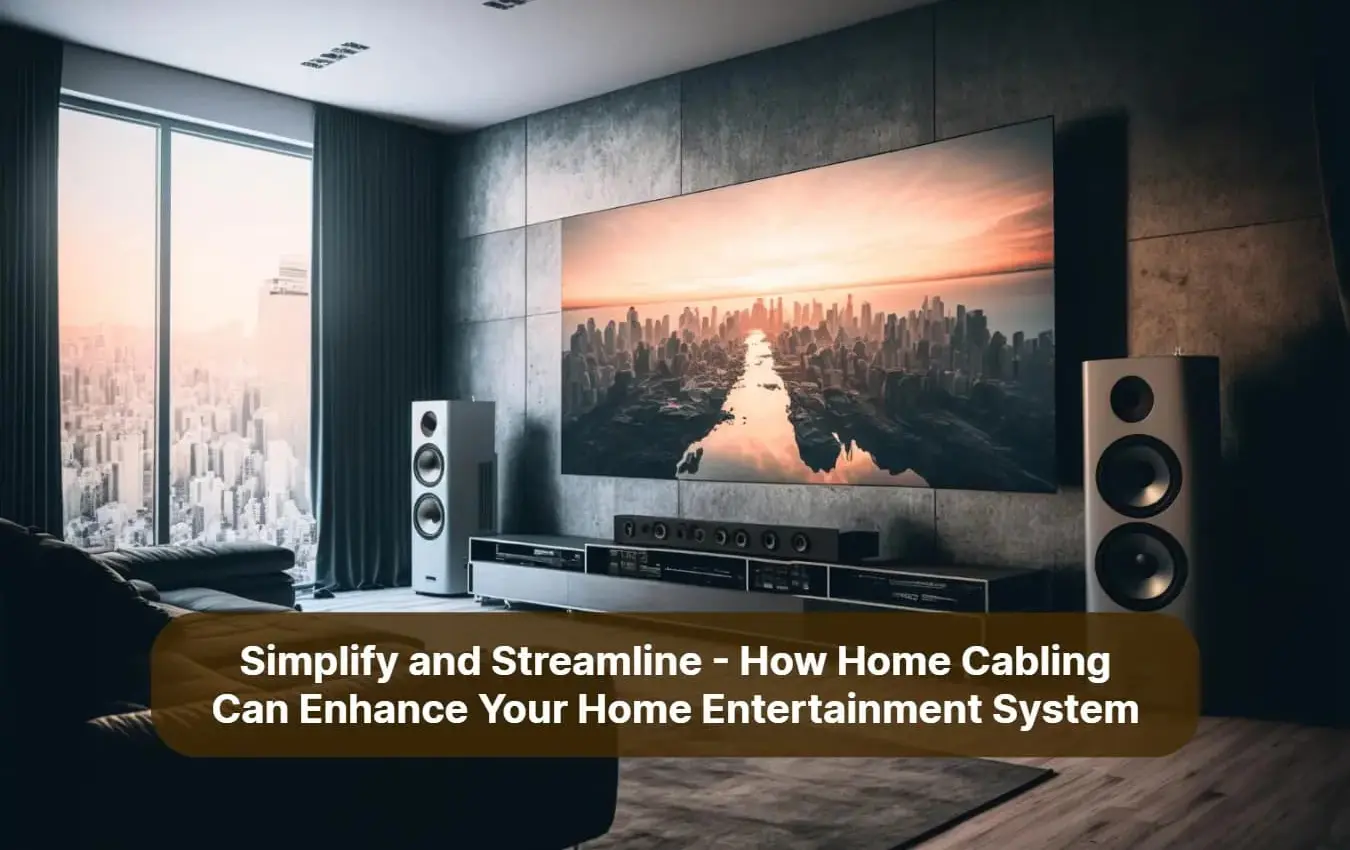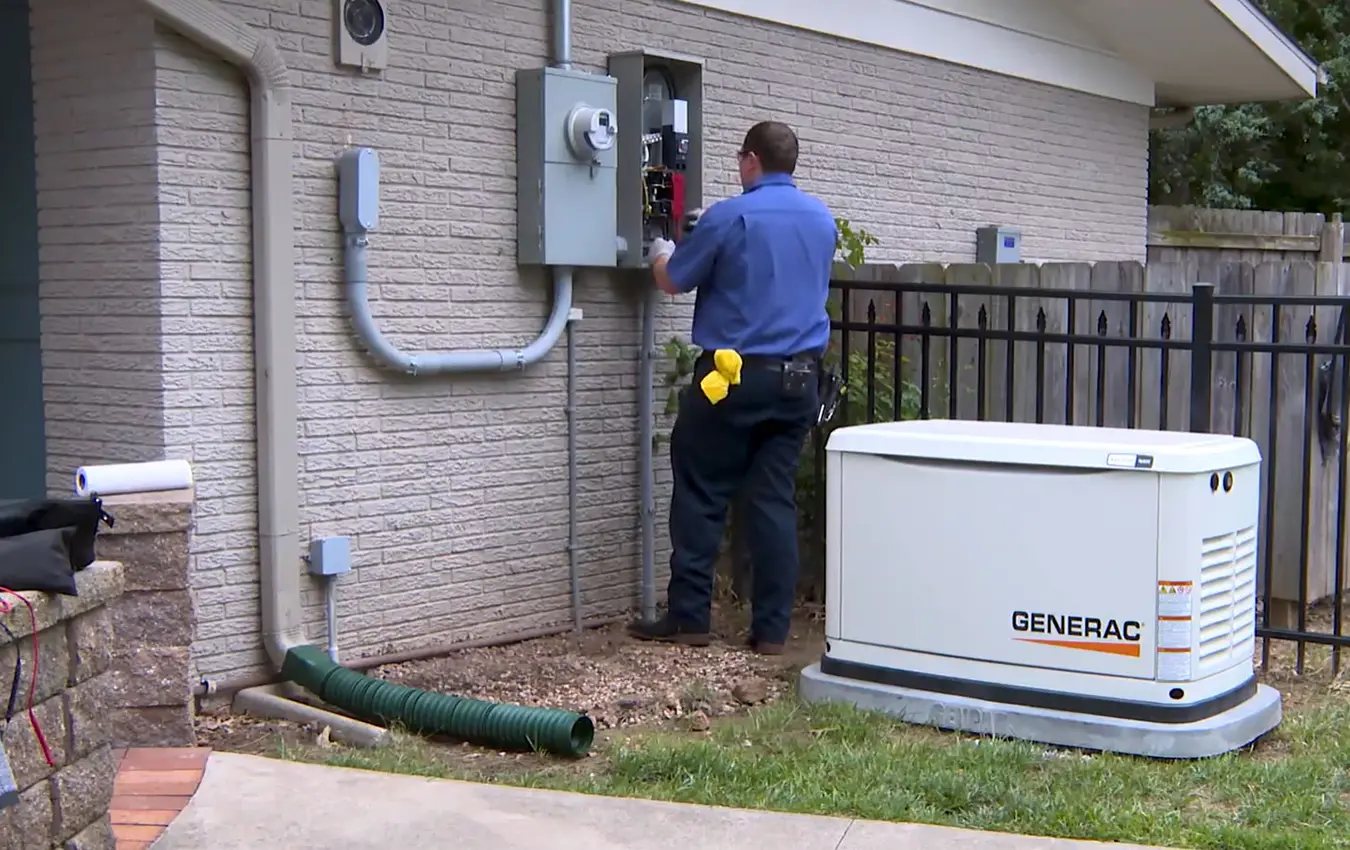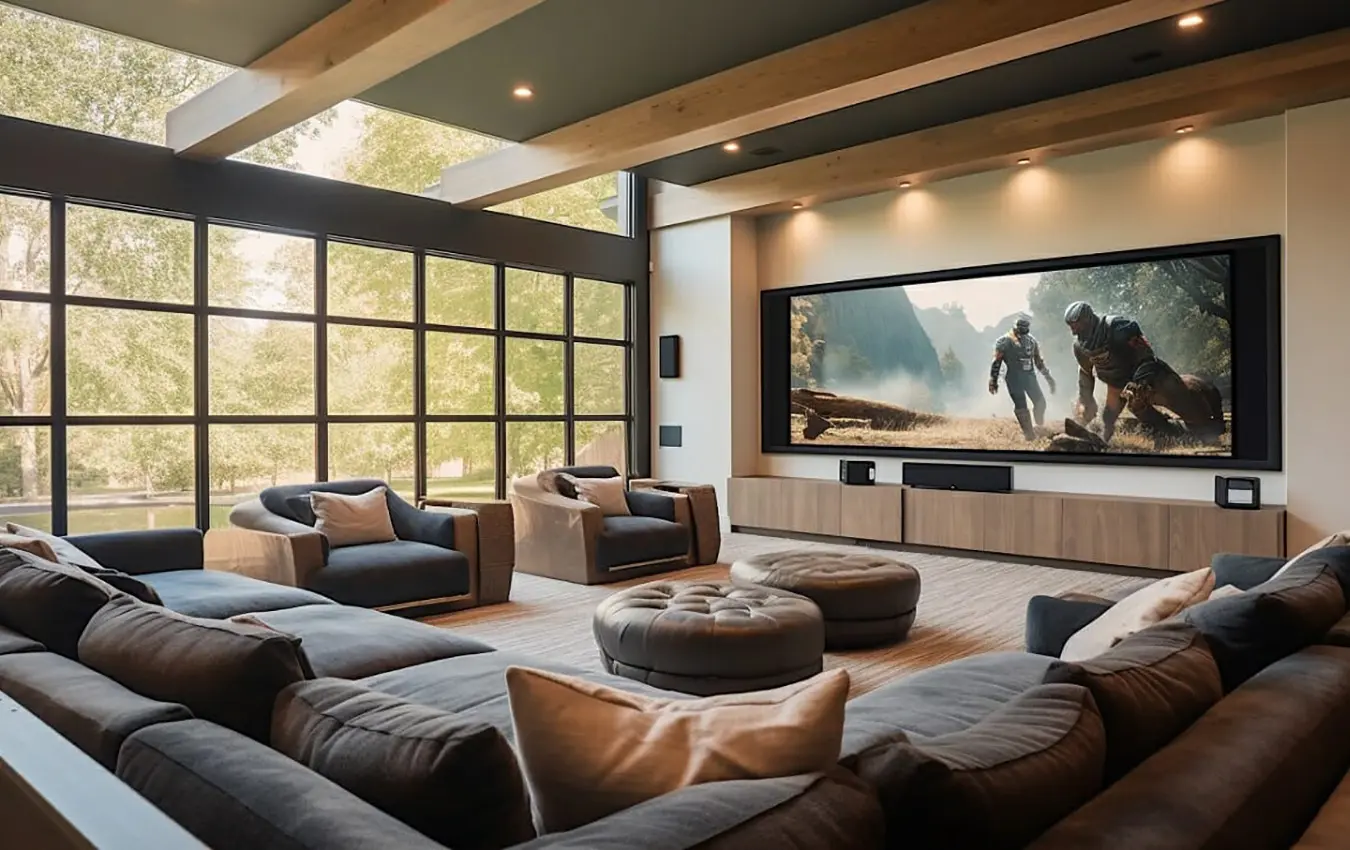Are you tired of dealing with a tangled mess of wires and cords just to enjoy your favorite movies or music? Look no further – home cabling is here to simplify and streamline your entertainment system! With the growing number of devices we use for entertainment, having a well-organized cabling system is essential for a hassle-free and enjoyable experience.
By implementing a proper home cabling setup, you can bid farewell to the frustration of untangling cords and the confusion of multiple remotes. Imagine having all your devices seamlessly connected and controlled from one central hub, eliminating the need for messy cables and ensuring a clutter-free environment.
Not only does home cabling make your setup more aesthetically pleasing, but it also improves the overall performance of your entertainment system. With neatly organized cables, you can prevent signal interference, ensuring a consistent and high-quality audio-video experience.
So why settle for a chaotic and frustrating entertainment system? Take control of your setup by embracing the benefits of home cabling. It’s time to simplify, streamline, and enhance your home entertainment experience like never.
Benefits of a well-structured home cabling system
Having a well-structured home cabling system brings numerous benefits to your home entertainment experience. Firstly, it eliminates the hassle of dealing with tangled cords and cables. With a properly organized system, you can easily identify and trace each cable, making troubleshooting and maintenance a breeze. Additionally, a well-structured cabling system allows for easy expansion and upgrades, ensuring that your setup remains future-proof.
Furthermore, a properly designed home cabling system improves the overall aesthetics of your entertainment area. No more unsightly cables dangling from your TV or speakers. With proper cable management, you can achieve a clean and clutter-free setup, enhancing the visual appeal of your space.
Lastly, a well-structured home cabling system improves the performance of your entertainment devices. By reducing signal interference and minimizing cable lengths, you can enjoy a more reliable and consistent audio-video experience. Say goodbye to pixelated images and distorted sounds. With home cabling, you can immerse yourself in your favorite content without any disruptions.
Do you need to hire a professional for installation of home cabling system for your home entertainment system?
Premier Electrical Services is ready to provide a free consultation on all stages of work and install of home cabling system at your request!
Understanding the different types of cables for home entertainment
When it comes to home cabling, it’s essential to understand the different types of cables used in a typical home entertainment setup. Each cable serves a specific purpose and is designed to transmit different types of signals.
1. HDMI cables
High-Definition Multimedia Interface (HDMI) cables are the go-to choice for connecting devices such as TVs, gaming consoles, and Blu-ray players. They transmit high-quality audio and video signals, supporting resolutions up to 4K.
2. Ethernet cables
Ethernet cables are essential for establishing a wired internet connection. They provide a more stable and faster connection compared to wireless networks, making them ideal for streaming high-definition content or online gaming.
3. Optical cables
Optical cables, also known as Toslink cables, are used for transmitting digital audio signals. They are commonly used to connect devices such as soundbars, home theater systems, and gaming consoles to achieve high-quality audio output.
4. Coaxial cables
Coaxial cables are used for connecting devices such as cable or satellite boxes to TVs. They transmit both audio and video signals, making them a versatile choice for home entertainment setups.
Understanding the different types of cables allows you to choose the right ones for your specific needs and ensure optimal performance for your home entertainment system.
Planning and designing your home cabling system
Before diving into the installation process, it’s crucial to plan and design your home cabling system. This step ensures that you have a clear vision of how your setup will look and function and helps you avoid potential issues down the line.
1. Determine your entertainment needs
Identify the devices you plan to connect, such as TVs, speakers, gaming consoles, and streaming devices. Consider the locations of these devices and how they will be used to determine the cable lengths required.
2. Choose a central location
Select a central hub where you will house your main devices and connect all the cables. This could be a media cabinet or a dedicated equipment rack. Ensure that the chosen location has proper ventilation and sufficient space for all your devices.
3. Create a wiring diagram
Sketch a wiring diagram that shows the layout of your devices and the cables connecting them. This will serve as a guide during the installation process and help you stay organized.
4. Consider cable management solutions
Research various cable management solutions such as cable raceways, wire looms, or cable sleeves. These solutions help keep your cables organized, minimize tangling, and improve the overall appearance of your setup.
By carefully planning and designing your home cabling system, you can ensure a smooth and efficient installation process, saving you time and frustration.
Step-by-step installation guide for home cabling
Now that you have a clear plan in place, it’s time to embark on the installation process. Follow this step-by-step guide to set up your home cabling system:
1. Install wall plates
Start by installing wall plates with appropriate ports in each room where you plan to connect devices. These wall plates will serve as the entry point for your cables.
2. Run cables through walls
Carefully run the cables from each wall plate to your central hub location. Ensure that you follow proper safety guidelines and avoid any electrical or plumbing obstacles.
3. Label and organize cables
As you run the cables, label them using cable tags or markers. This will help you identify each cable during the connection process. Additionally, use cable management solutions such as cable ties or Velcro straps to keep the cables organized and prevent tangling.
4. Connect devices
Once all the cables are in place, connect each device to the appropriate port using the corresponding cables. Double-check the connections to ensure they are secure.
5. Test and troubleshoot
Power on your devices and test the connections to ensure everything is working correctly. If you encounter any issues, refer to your wiring diagram and troubleshoot accordingly.
By following this step-by-step installation guide, you can set up your home cabling system with ease and confidence, knowing that your entertainment devices are properly connected.
Troubleshooting common home cabling issues
Even with careful planning and installation, you may encounter some common home cabling issues. Here are a few troubleshooting tips to help you address these problems:
1. Check cable connections
Ensure that all the cables are securely connected to their respective ports. Loose connections can cause signal loss or intermittent issues.
2. Test individual cables
If you are experiencing issues with a specific device, test the cable by swapping it with a known working cable. This will help you determine if the problem lies with the cable or the device itself.
3. Test devices individually
Disconnect all devices and test them one by one to identify any faulty devices that may be causing issues in your setup.
4. Update firmware and drivers
Ensure that all your devices have the latest firmware and drivers installed. Outdated software can cause compatibility issues and affect the overall performance of your home cabling system.
5. Seek professional assistance
If you are unable to resolve the issues on your own, don’t hesitate to seek help from a professional home theater installer or technician. They have the expertise to diagnose and fix complex cabling problems.
Remember, troubleshooting is a normal part of setting up a home cabling system. With patience and persistence, you can overcome any challenges and enjoy a seamless entertainment experience.
Upgrading your home cabling system for future technologies
As technology continues to evolve, it’s important to future-proof your home cabling system Here are a few tips to ensure that your setup is ready for the latest advancements:
1. Install higher-quality cables
Invest in high-quality cables that support the latest standards, such as HDMI 2.1. These cables provide enhanced bandwidth and support features like 8K resolution and variable refresh rates.
2. Consider fiber optic cables
Fiber optic cables offer superior performance and future-proofing capabilities. They can transmit large amounts of data over long distances without signal degradation, making them ideal for high-bandwidth applications.
3. Install additional conduits
Leave extra conduits or empty cable runs during the installation process. This allows for easy future cable upgrades without the need for extensive wall modifications.
4. Research emerging technologies
Stay informed about emerging technologies and their cabling requirements. This will help you make informed decisions when upgrading your home entertainment system.
By adopting these upgrade strategies, you can ensure that your home cabling system remains compatible with future technologies, saving you the hassle of extensive rewiring in the future.
Best practices for organizing and managing your home cabling
Keeping your home cabling system organized and well-managed is essential for maintaining its functionality and aesthetics. Here are a few best practices to help you achieve a clutter-free setup:
1. Use cable management solutions
Invest in cable management solutions such as cable raceways, wire looms, or cable sleeves to keep your cables organized and prevent tangling. These solutions also make it easier to trace and troubleshoot cables when needed.
2. Label your cables
Label each cable with tags or markers to easily identify them. This makes it simpler to identify and trace cables during troubleshooting or reconfiguration.
3. Use color-coded cables
Assign different colors to cables based on their purpose or destination. This makes it easier to identify and differentiate cables at a glance.
4. Regularly inspect and maintain cables
Periodically inspect your cables for any signs of wear or damage. Replace any damaged cables promptly to prevent signal loss or other issues.
5. Keep cables away from heat sources
Avoid routing cables near heat sources such as radiators or heating vents. Heat can degrade the performance and lifespan of cables.
By following these best practices, you can maintain a clean and organized home cabling system, ensuring optimal performance and longevity.
Recommended tools and resources for home cabling
To assist you in setting up and managing your home cabling system, here are some recommended tools and resources:
1. Cable management tools
Invest in cable management tools such as cable ties, Velcro straps, and cable clips to keep your cables organized.
2. Labeling tools
Use cable tags, label makers, or printable labels to label your cables accurately.
3. Cable testers
A cable tester is a handy tool for troubleshooting and verifying the integrity of your cables.
4. Online forums and communities
Join online forums and communities dedicated to home theater setups and cabling. These platforms provide valuable insights, tips, and solutions for common cabling issues.
5. Professional installers
If you prefer a hands-off approach or have a complex setup, consider hiring a professional home theater installer or technician. They have the expertise to design and install a robust home cabling system tailored to your needs.
By utilizing these tools and resources, you can simplify the installation process and effectively manage your home cabling system.
Conclusion: Enjoying a seamless home entertainment experience with proper cabling
A well-structured home cabling system is the key to simplifying and streamlining your home entertainment experience. By embracing the benefits of home cabling, you can bid farewell to tangled cords, multiple remotes, and signal interference.
With proper planning, installation, and organization, you can achieve a clutter-free setup that enhances the aesthetics and performance of your entertainment system. Moreover, by following best practices and staying informed about emerging technologies, you can future-proof your home cabling system.
So, don’t settle for a chaotic and frustrating entertainment setup. Take control of your home cabling and enjoy a seamless and enjoyable home entertainment experience like never. Simplify, streamline, and enhance your entertainment system with home cabling today! Use Premier Electrical Services to quickly and efficiently install a home cabling system. Call us at 954-900-1696 for a consultation, or leave a request through the contact form!
Check out the latest news:
- 10 Electrical Hazards of DIY Generator Installation
- Transform Your Living Space: The Benefits of Home Theater Systems
- How to Choose the Right Lighting Fixtures for Your Home or Business
- Don’t Be Left in the Dark: Why Homeowners Should Consider Premier Electrical Services for Backup Generator Installation
- Residential Electrical Wiring: Why You Need a Professional Electrician






